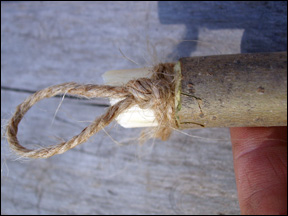
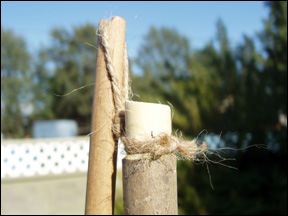
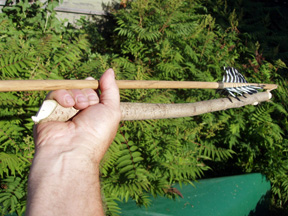
The short loop type atlatl is the absolute easiest to make -- just a stick with a cord tied on and a loop in the end. With a shallow end nock or side nock in the end of your dart, the atlatl is ready to go. The disadvantage of this type of atlatl is it is not as fast loading as a hook type, but accuracy and dart speed are equal to hook types.



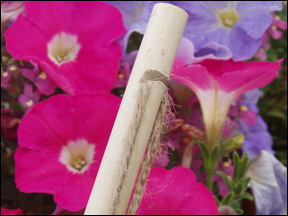
I tie on a loop at the end of my favorite hook atlatls for walking around locked and loaded, as we use to say in the Army. The loop doesn't fall off as easily as the shallow hook. I've used grass roots and bark for loop cords. My favorite is a leather boot lace. Not as strong as many vegetable fibers, but very abrasion resistant.
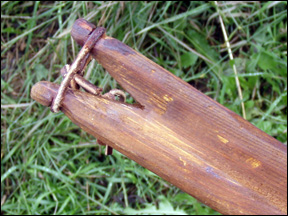
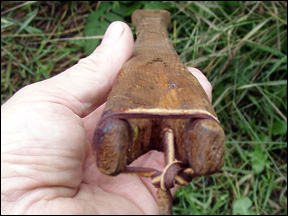
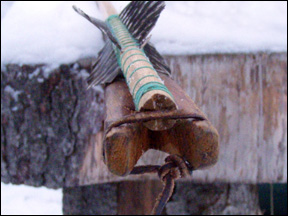
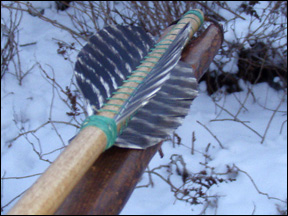
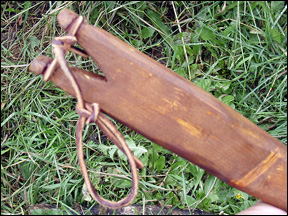
The fork 'n' cord atlatl is something I came up with to equal the fast reloading of the my best hook atlatl. The grooved board guides the end of the dart like in many of the Eskimo and Aleut designs. Instead of coming up to a hook, I put a cord across a fork in the end of the throwing board. With cross nocks and four fletches, I can load darts blind folded. On my three fletch darts, I put a cock feather or fluffs on the dart, so I can orient nock for reloading.
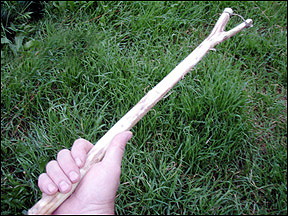
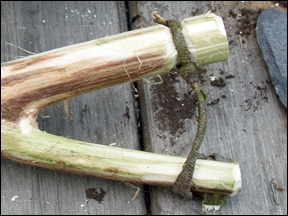
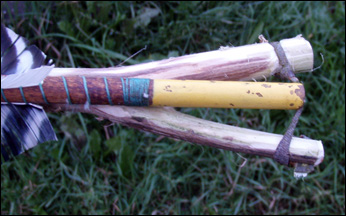
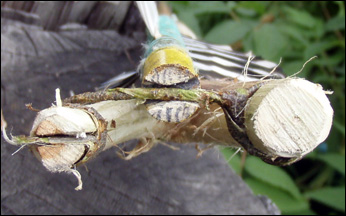
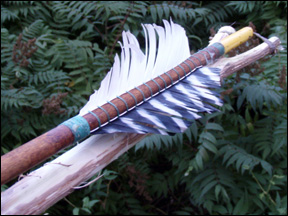
Using just a forked stick and some twisted bark tied across the fork is another way to make an atlatl with minimal cordage and tools. This one was made with a sharp stone flake. Even with this crude looking atlatl, you could propel a good stone tipped dart through both sides of a 1,500 lb. moose at 20 yards.
Looking at atlatl and dart technology in different ways may give us insight into early human endeavors that can't be found in the archeological record.
"Thinking outside the box."
Email your comments to "Mike Richardson" at fiddler49@hotmail.com
Mike Richardson resides in Anchorage, Alaska.
We hope the information on the PrimitiveWays website is both instructional and enjoyable. Understand that no warranty or guarantee is included. We expect adults to act responsibly and children to be supervised by a responsible adult. If you use the information on this site to create your own projects or if you try techniques described on PrimitiveWays, behave in accordance with applicable laws, and think about the sustainability of natural resources. Using tools or techniques described on PrimitiveWays can be dangerous with exposure to heavy, sharp or pointed objects, fire, stone tools and hazards present in outdoor settings. Without proper care and caution, or if done incorrectly, there is a risk of property damage, personal injury or even death. So, be advised: Anyone using any information provided on the PrimitiveWays website assumes responsibility for using proper care and caution to protect property, the life, health and safety of himself or herself and all others. He or she expressly assumes all risk of harm or damage to all persons or property proximately caused by the use of this information.
© PrimitiveWays 2013